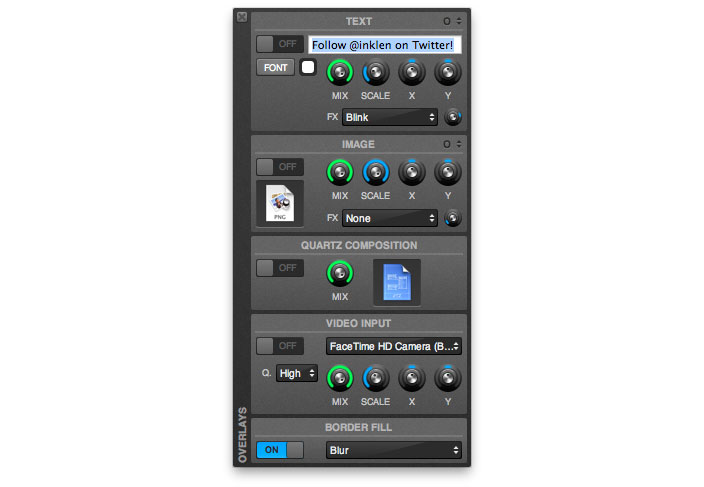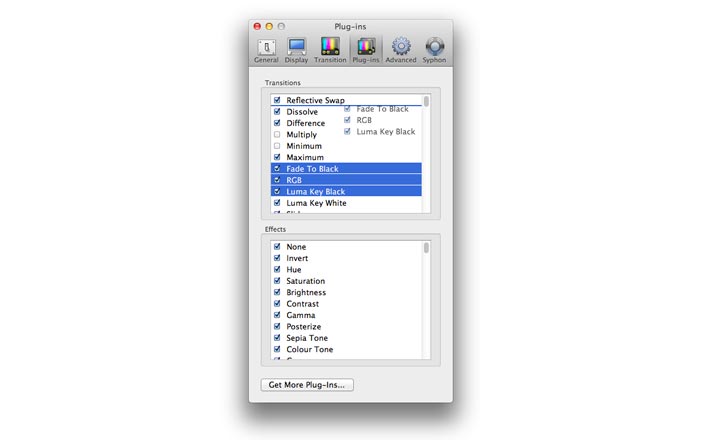

To keep Time Machine off my back, especially while DJing, I simply disable Time Machine by turning it off and when I’m ready to backup, I turn it back on. Good job, now don’t you feel better? Like I said, I’m all for backing-up, but I’m not down with Time Machine wanting to backup my system while I’m DJing not cool Time Machine! Time Machine is set to backup your files every hour, which in my opinion is a bit excessive, but I understand the importance of it. If you’ve never made a system backup or if it’s been more than a few months since your last backup, go do it now, I’ll wait. I’m all for backing-up and doing it often.

#Cool ways to use mixemergency mac#
Switch your Mac to the higher performance card and take the guess work out of it. If you're experiencing intermittent stutter, lag or performance issues, this could be partially to blame. The problem is, by default, your Mac chooses which one to use and when to switch. When using graphic intensive programs for DJing or visuals, it’s recommended to use the higher performance card. By default your Mac is setup to automatically switch between the two.
#Cool ways to use mixemergency pro#
If you’re using a MacBook Pro (15” or 17”) built in 2010 or newer, your computer may have two graphics cards, one for normal use and one for high performance. For OSX 10.7 and higher, click the Advanced tab to find this option.

The remedy is easy, open Dashboard and disable all Widgets except for one. You might not know this, but those little Widgets, hiding out in Dashboard, eat-up your RAM, even if Dashboard itself is closed. The Weather, World Clock, and Stickies Widgets are kind of cool, but that’s about as far as I delved. To remove the drive, click on the drive icon listed and use the – key.ĭo you use Dashboard Widgets on your Mac? Does anyone use these things? When Mac introduced Dashboard to OSX in 10.4, I gave the mini-apps called Widgets a try, but couldn’t find anything particularly useful for what I do.Repeat the above process for each drive you wish to add to the Privacy list. Click the + sign in the bottom left corner, click on the drive you want to make ‘private,’ and then click Choose.Open System Preferences by clicking the System Preferences icon on your dock.The only hitch, Spotlight will no longer be able to search the drives you make ‘private.’ If you’re a Spoltight addict, don’t worry, you can easily remove your drives from the Privacy list to restore searchability after your gig is over. The easiest way to prevent indexing is to adjust your Spotlight Privacy settings. For everyday use, this is fine and not too much of a nuisance, but when using resource intensive audio applications, having Spotlight suddenly start indexing in the middle of your set can be disastrous. Have you ever seen the Spotlight magnifying glass icon with a pulsating dot in the middle? Did you notice your Mac running super sluggish while this was occurring? This is Spotlight creating a virtual index of all the files and folders in your system (i.e., indexing), allowing Spotlight to quickly search your drives. This next article takes the Mac tweaks one step further by guiding you through advanced Mac optimizations and recommended application add-ons to help fine-tune your Mac for live performance. Are you ready to dig a little deeper and further optimize your Mac for live performance? Within the previous Mac optimizations article- Quick Mac Optimization for Live Performance-I walked you through a few basic system adjustments.


 0 kommentar(er)
0 kommentar(er)
